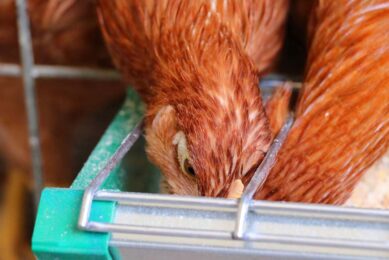Indonesia: Boehringer conducts seminar about coryza

Infectious coryza not only occurs in developing countries such as Indonesia, Thailand, India and China, but also in developed countries such as the United States. Coryza also could increase the percentage of mortality by 48%. So coryza is a serious problem for poultry farmers. These statements were stated by Dr. Patrick Blackall, an animal disease expert from the University of Queensland, Australia, recently in a seminar in Bogor which was conducted by PT Boehringer Ingelheim Indonesia.
Blackall said that coryza can be found both in layer and broilers. “Generally in the world, coryza could decrease the egg production by 10% to 40% and in layers, coryza usually occurs at peak production. Besides decreasing the egg production, coryza also could increase the number of rejected chickens and reduce the quality of carcass,” he explained.
Blackall also compared that the economical impact of coryza in developing countries could be higher than in developed countries. The reason is that in many developing countries, the control of biosecurity program is low and multi-age in one farm still applied. For example, in the case of coryza in layers in China, the morbidity can reach 70% and the reduction of egg production can reach 87% for 1.5 months.
The serovar A, B and C
By using sequencing method, Blackall said, it was found that the cause of coryza is Avibacterium paragallinarum. Obviously this bacterium is the only one bacterium in Avibacterium group which has no catalase enzyme, so that this fact could be the key for diagnosis.
Globally, Avibacterium paragallinarum consists of 3 serovars such as A, B and C. Indonesia has those 3 serovars, while Germany, Japan, Malaysia, Australia and Taiwan only have 2 serovars.
“Initially, the serovar B was not recognised as a real serovar because it is not pathogenic and can be protected by the serovar A and C. But in the development, the serovar B is a real serovar which has different protein and has no cross-protection with other serovars,” said Blackall.
Syahroni Djaidi – Head of Animal Health Business Department of PT Boehringer Ingelheim Indonesia added that the prevalence of the serovar B has been found in Indonesia in 1991. Although the serovar B is pathogenic, many people believe that the serovar B is not important. “The problem in Indonesia, is that the research on coryza is very limited. And also the low availability of antigen B doesn’t encourage the government’s institution to identify the serovar B,” he argued.
Blackall concluded that since diagnosis of coryza is very critical, the diagnosis should be conducted accurately. Another recommendation is vaccination. “The inactivation agent, adjuvant and strain used should be noticed in order to get high protection. And the farmers should know that the effectiveness of the vaccine depends on their management in the farm,” he said.
The serovars of Avibacterium paragallinarum in the world
| Country | Serovar |
| Argentina | A, B, C |
| Brazil | A, B, C |
| Mexico | A, B, C |
| United States | A, B, C |
| China | A, B, C |
| Indonesia | A, B, C |
| The Philippines | A, B, C |
| South Africa | A, B, C |
| Taiwan | A, C |
| Australia | A, C |
| Japan | A, C |
| Malaysia | A, C |
| Germany | A, B |
Source: Dr. Patrick Blackall, the University of Queensland, Australia
Join 31,000+ subscribers
Subscribe to our newsletter to stay updated about all the need-to-know content in the poultry sector, three times a week. Beheer
Beheer








 WP Admin
WP Admin  Bewerk bericht
Bewerk bericht